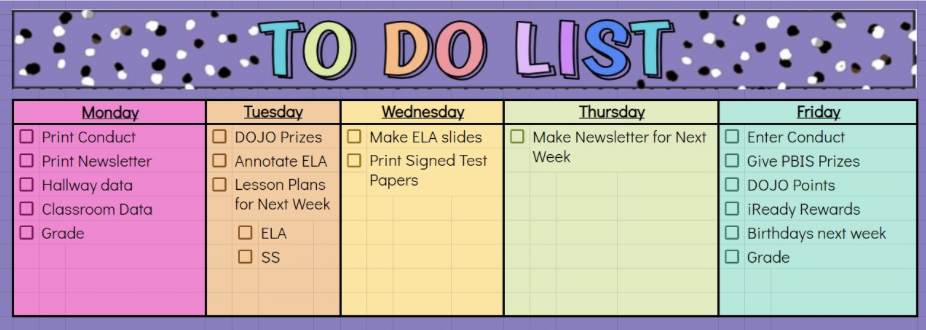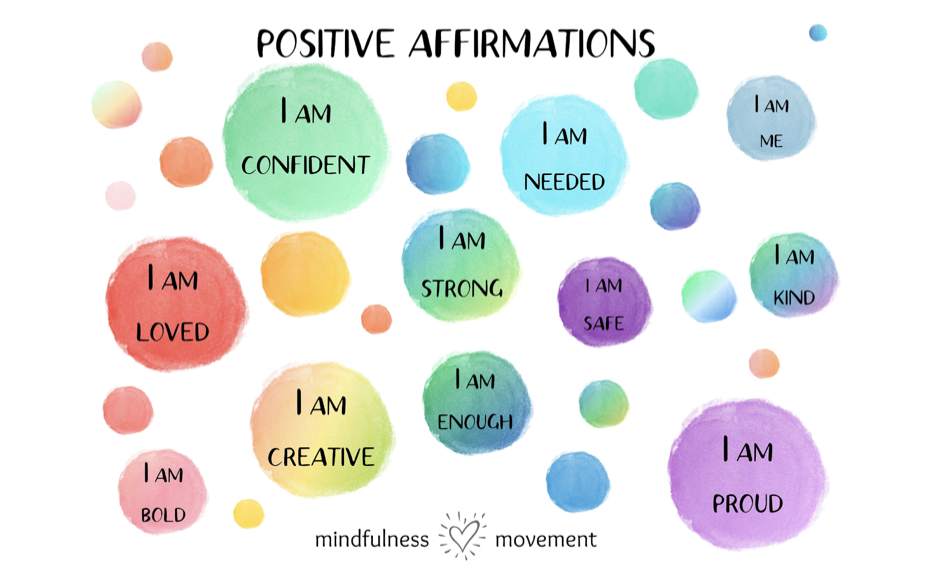With summer behind us, chances are a reflection of the year past has crossed your mind at some point. You may have felt a need for change, improvement, or growth tug at you. Being committed to growth and setting new goals makes you a lifelong learner, the teacher your students need you to be, and most importantly the person that YOU need you to be.
Being a “lifelong learner” is essential for teachers to remain effective and to continue to improve. Goal setting can drive us to advance in our careers, perform better at our job, and strengthen our skills. Student excellence, classroom management, and instructional strategies are just some professional goals teachers benefit from. As an added bonus, by growing as an educator, your students can reap the rewards.
But let’s not forget about the person inside of the role of the teacher. Work burnout, mental health, time, relationships, and weight management are just some reasons you might be ready to set new personal goals. Improving personally trickles over to your job, your family, your community, and gives you a sense of power to accomplish more.
Whether you’re looking for career advancement or to become the best version of yourself, set your goals and make a plan to get you going, keep you there, and complete even the most difficult goals with success.
Steps to Success

Understanding Your “Why
Understanding your purpose for growth gives you ownership of what you are trying to improve. When you clicked on this blog, you may have immediately thought about something you want to improve about yourself. Write that raw thought down! That unconscious reason is why you chose to be in this moment and it will help you understand your “why”. You may feel overwhelmed right now, you may feel motivated, or many places in between – write that down too! Associate the feeling you wrote to the reason you chose this article. How would accomplishing it make things better and help you grow? Also, what’s the motivation for your end result? – You guessed it, write it down! Remember, to always go back to your “WHY.”
Create the Right Mindset
In an article, Jennifer Gonzalez writes, “One of the most significant improvements you can make to your teaching is changing the way you think about it. Mindset has a powerful impact on how you experience your work and whether or not you continue to grow and thrive.” Find comfort in taking risks and know that it is ok to fail. Failure (and success) are not permanent. Difficulty is a small stepping stone towards the bigger picture. Learning is a lifelong process; so be confident, embrace challenges, and persevere through difficulties.
Where to Start
Start by figuring out where you really need work: be honest and kind with yourself. Spend some time here. Write them ALL down and be very specific! Then, sort them into groups such as short-term goals, long-term goals, and goals for yourself personally and/or professionally. However, planning your goal shouldn’t take longer than living your goal. It’s more important to understand the intention.
Choose some form of documentation that works for you and isn’t too time consuming to find or create. If you’re techy, there are apps and websites that help you track your progress. Your main goal right now is to get it off your mind and out into the world.
Start small and minimal. If you have a long-term goal in mind, consider breaking it down into smaller more manageable parts. Start by choosing the one that feels the most heavy. Or if you’re overwhelmed, choose the one that you think you can accomplish right away!
Identify your Goals & Audience
Think about what your goals are actually about and who your audience will be. Here are some personal and professional ideas to get you started.
Establish a better work-life balance
Teachers can find themselves working well beyond school hours. We often use the hours outside of school to prepare lesson plans, grade tests, and plan activities. Create a goal to establish a better balance between work and personal life. Having a daily schedule of tasks that repeats weekly, such as the one below, is also helpful for setting a routine to save you time on the weekends.

Organize your time
Create a set schedule for things to help prioritize work and make your day more organized from start to finish. Set timing goals to arrive earlier and feel more prepared or to leave on time to be present for your family.
Organize your classroom
Diminish clutter at centers, desks, curriculum materials, supplies, unnecessary papers laying around, etc. A cluttered space is hard to teach and learn in. Demonstrate the value of organization to students. Creating a more organized classroom can boost student engagement while reducing teacher stress. Organize resources for students to use without assistance. Give everything a “home”, give it away to someone else who needs it, or recycle it.
Organize your home
This can make your daily routine more effective and save time. Organize how you store your breakfast and lunches, school clothes, and anything else causing hectic mornings or evenings. Wait to organize anything that doesn’t help you function more efficiently for the summer or holiday breaks.
Communication
Communicating with parents, coworkers, and administration can sometimes be a challenge. Make a goal to find new ways of feeling heard and listen better to others to make a united team for your students. Together with students, work on developing positive communication skills and confidence in expressing yourself. Model this for students and practice together.
Collaboration
Collaborate with others to share ideas, resources, and best practices. Be open to new ideas and approaches. Cultivate relationships and get to know your colleagues. Learn from their experiences and share your own expertise to build a connected school community. Seek student feedback and involve students in the process of learning.
Diversify
Commit to a goal of being more inclusive and celebrate the diversity of your students. Integrate culture, different perspectives and acceptance into your curriculum. Foster positive relationships among students and address any issues that may arise in a respectful and constructive manner. This will help students feel supported, valued, and empowered to tackle challenges.
Engagement
If your class isn’t run well and your students aren’t focused, it’s pretty hard to get anything else done and student achievement often suffers. Hands-on learning that gets students off their feet and moving around can be a great way to spark their creative talents. Study up on engagement professionals such as Ron Clark. Stay current with social media trends and use them in a digitally responsible way in your classroom to engage students. Use current music or audio from social sites to learn multiplication facts, social studies events, scientific processes, and reading strategies. Use dances, role play, and dress up to boost student engagement. Encourage student participation in the delivery of your lessons.
Instruction/Differentiation
All students learn differently and to effectively communicate as a teacher you will need to differentiate your instruction. Try learning other teaching methods that you may not have used before. Incorporate more than one at a time to reach more students. As you teach – model, as you model – write. These will help your visual, auditory, and kinesthetic learners.
Who is the audience
Begin by thinking about who your goal is for and who it will support. It may be all about you or maybe it’s improving something within your family, your professional career, or your students. You own these goals but thinking about an audience can help to keep you accountable. You might want to share with the world and write them on a blog. Or you might want to keep them tucked away under your mattress. Most of us are somewhere in between and all are acceptable!
Publicly acknowledging your faults and showing how you want to grow from it will give you a team of support and a social “accountabilibuddy”. By posting your goals around your house, classroom, and on social media, they’ll remain fresh in your mind and the support you receive from others can be the driving force for any sized goal.
If your audience is your students, and you feel comfortable sharing that with them, display it in your classroom and invite them to be a part of your journey – trust us, they are rooting for you! They will remind you and challenge you and this will build a relationship of acceptance.
Need inspo? Network with other education professionals to learn about new career opportunities or how to improve as a teacher. Attend teacher conferences, workshops, professional development, webinars, and collaborative learning communities. Social Media is a great way to connect globally with people who share your love for education.
Take Action
Do you thrive on structure? The SMART method is a structured way you can live your goals, both professionally and personally. SMART is an acronym and as you know teachers love acronyms.
S: Specific – Be as detailed as possible on exactly what you want to accomplish
M: Measurable – Determine how you will measure progress and completion of your goal.
A: Achievable – Don’t waste time on a goal if realistically it’s not achievable.
R: Relevant – Each teacher goal example selected should be appropriate for your situation.
T: Time-bound – Make yourself a deadline for completion. Doing so will build commitment and a sense of urgency.
Monitor Your Progress
Tackling the Lull
Burnout is real and can be debilitating for reaching your goals! On days when you feel that you have NOTHING left to give for improvement – do ONE thing and you’re one step farther than you would be if you did nothing. It’s easy to get overwhelmed; you can’t possibly do it all. To tackle the lull, say an affirmation statement to empower yourself. A commitment statement such as, “Today I choose…” also shifts your mindset to focus on one thing. But most importantly, be kind to yourself and know that goals don’t lead us down a straight path. Author, professor, and podcast coach Brene Brown says, “Grace means that all of your mistakes now serve a purpose instead of serving shame.”

Reflecting
Remember the list you started with in the beginning? As you go, check off what you have accomplished, scratch out any goals that no longer apply, change the list, add to it, but leave everything on there. Use it as a way to reflect on how far you have come. You may find that you end up circling back to it. Or remind yourself why you scratched it off to begin with. Celebrate your wins AND your losses. Reflect on what went wrong, how you can fix it, and what tools you have acquired that can help you overcome.
One thing about life is that it is always changing and never stagnant. Education is adapting to meet the needs of learners, revises when history arises, and as research occurs it ventures new needs in the classroom. Growth is an ongoing process that changes with you – which is the ultimate goal. By adapting to these changes and setting goals for improvement you are living a commitment to learning from the only place it should live – within you!
Gonzalez, J. (2015, May 27) Goal-Setting for Teachers: 8 Paths to Self-Improvement. https://www.cultofpedagogy.com/goal-setting-for-teachers/
Positive Affirmation Photos
https://www.etsy.com/listing/1168749960/positive-affirmation-poster-i-am